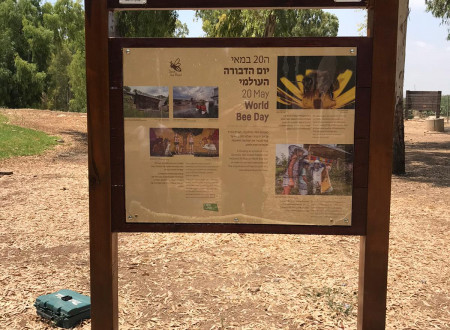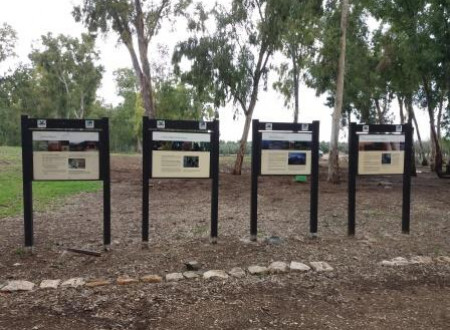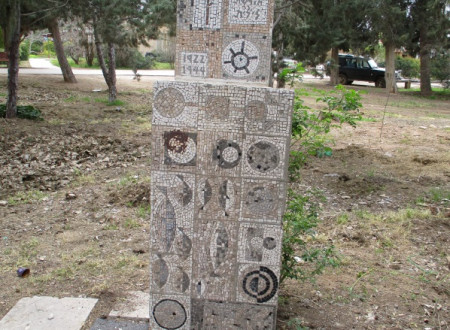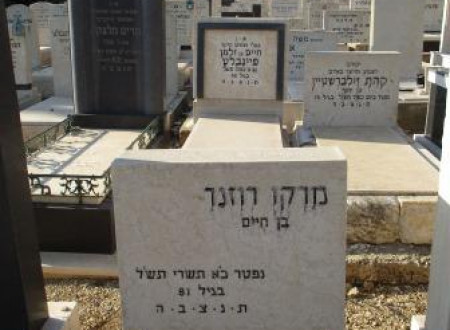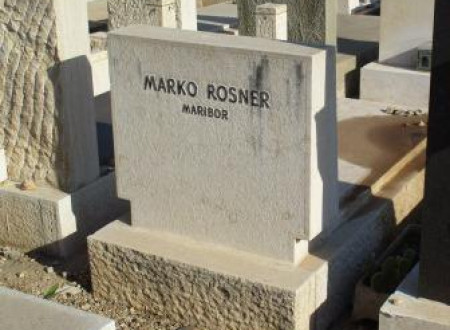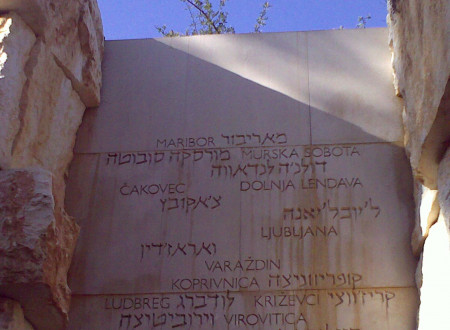Israel
News
-
Minister Fajon in Cairo: We are determined not to fail the people of the Middle East
-
Melita Gabrič: We must strive to build trust, not deepen divisions
-
State Secretary Štucin calls for more decisive action in Gaza and Ukraine at the UN Security Council
-
Minister Fajon: Advocating for a peace acceptable to Ukraine and grounded in the UN Charter
-
Highlights of Slovenia's activity in the UN Security Council in October 2024
-
Obstruction of UNRWA is a serious blow to international law and the UN Charter
-
Minister Fajon at UfM Regional Forum on resolving the crisis in the Middle East
-
Minister Fajon at the FAC meeting on further steps in crisis areas
-
MED9 leaders urge peace in the Middle East
-
Prime Minister Golob: "One year since Hamas attack, capture of Israeli hostages and one year since Israeli military launched one of the largest slaughters in modern history"
Political relations
Slovenia and Israel established diplomatic relations on 28 April 1992. Relations between the two countries are good and traditionally friendly, and have developed in a spirit of constructive cooperation. The two countries have developed a wide range of cooperation, particularly in the fields of economiy, science and culture. These relations provide the basis for developing a long-term partnership.
Cultural cooperation
Cultural cooperation between Slovenia and Israel has been fruitful. It is based among other on the "Program of Educational, Scientific, Cultural, Youth and Sports Cooperation between the Government of Republic of Slovenia and the Government of the State of Israel". This legal basis enables a platform for regular cooperation and cultural exchange between cultural and educational institutions, and provides for scholarships for postgraduate students from both countries.
Portal Culture.si offers information on Slovene cultural producers, venues, festivals and support services, all in one place. It encourages international cultural exchange in the fields of arts, culture and heritage. You can also find news about Slovenian cultural events in Israel on the Facebook page of the Embassy Tel Aviv.
Slovenian community in Israel
Slovenians in Israel live in broader Tel Aviv area, and also in Nahariya, Jerusalem, Beer Sheva and Ashkelon. There are no organised associations or clubs of Slovenians in Israel.
Slovenian forest near Kibbutz Yifat
In 2006 the Slovenian forest near Kibbutz Yifat was inaugurated under the patronage of Adi Rosenfeld, Honorary Consul of the Republic of Slovenia to the State of Israel for Haifa and the North. Area of the forest is 7 hectares and it comprises a park, car parking area, an amphitheatre with a stage where many performances are held throughout the year including end of year school performances, holiday events of all religious communities in Israel as well as private social parties. The Slovenian forest also provides a meeting place for popular sports athletes like bicycle riders and horse back riders.
The Slovenian Forest authorities contributed a "kozolec" or hay-rack, the distinguish symbol of the Slovenian rural areas architecture. There are also information boards with the presentation of Slovenia's forests, fauna and flora, and an information board on World Bee Day, which was declared in the UN at the initiative of Slovenia.
Slovenian bronze relief at the Universitv of Tel Aviv
A bronze relief of the poem Zdravljica (a Toast) of the Slovenian National poet dr. France Prešeren marking 200 years since his birth, and the tenth anniversary of the independence of Slovenia, is located in the Max Webb Family School of Languages Building. Since September 1989 7th stanza of Zdravljica has been the national anthem of Slovenia.
Slovenian sculpture in Jerusalem
Statue “SLO - Venetian horse - Cavalla della pace”, created in Bronze by Slovenian Sculptor Oskar Kogoj. Gift of the Republic of Slovenia, The “Mariani” Foundry Pietrasanta Italy, Oskar Kogoj Family Slovenia and The Jerusalem Foundation in celebration of the 3000th Anniversary of Jerusalem. 1997. Moshe Bar’am Square, Jerusalem.
Slovenian mosaic in Nazareth
Slovenian mosaic dedicated to St. Mary by artist Stane Kregar is presented on a mosaic wall at the Basilica of the Annunciation in Nazareth, the largest Christian sanctuary in the Middle East.
Slovenian memorial plaque in Ein Kerem
At the courtyard of the Church of St. John the Baptist in Ein Kerem there is a plate with religious text donated by Slovenian pilgrims and Franciscans in 1991.
Monument to the Slovenian partisan Lili Neuman in the Kibbutz Gat
In the Kibbutz Gat, there is a monument to the Slovenian partisan Lili Neuman (1922-1944), who was killed during the Second World War. Lili Neuman was a member of Hashomer Hatzair (socialist-zionist movement of Jewish youth founded in 1913) and through it also a member of the Kibbutz Gat. Her mother Mica moved to the kibbutz and lived there after the Second World War. The monument is located it in a forest in the centre of the kibbutz, which is also called Lilit's forest (Lili was named Lilit in Hebrew). The children of the primary school of the kibbutz lay flowers in front of the monument during the celebration of Israeli Independence Day every year.
The tomb of Marko Rosner at the Joshua Field Cemetery in Haifa
Marko Rosner (1888, Iacobeni – 1969, Haifa) was a central personality of the Jewish community of Maribor before World War II, which numbered around 100 people. His companies employed around 1,000 workers in 1939. Marko Rosner had a strong sense for social welfare and he provided for many social services for his employees. He made several major donations and was involved in humanitarian activities. For his 50th birthday, he established a fund for his employees and contributed 100.000 dinars himself. Also, he contributed 100.000 dinars to at that time newly established academy of science and arts in Ljubljana. He also helped many Jews who were fleeing and crossed the border illegally.
The Valley of the Communities in Yad Vashem
In Yad Vashem in the Valley of the Communities there is a massive 1 hectare monument literally dug out of natural bedrock. Over 5 000 names of communities are engraved on the stone walls in the Valley of the Communities. Each name recalls a Jewish community which existed for hundreds of years. Following Slovenian cities are enlisted: Maribor, Murska Sobota, Dolnja Lendava and Ljubljana.
Tree of Righteous among the Nations
A tree planted in Yad Vashem in honour of Slovenian Zora Piculin, the Righteous among Nations.
The Honour Wall in the Garden of the Righteous
The names of the Slovenian Righteous among Nations: Uroš Žun, Ivan Breskvar, Ivan & Ljubica Zupančič and Andrej Tumpej are written at the Honour Wall in the Garden of the Righteous.


